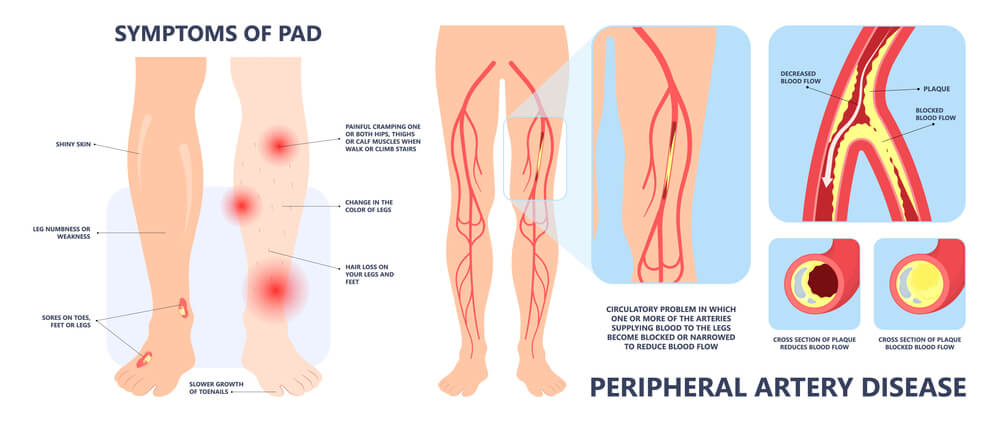How much do you know about the symptoms and signs of peripheral artery disease?

If you have a mild problem, you may have no symptoms, but symptoms appear as the disease progresses. The classic complaint of that disease is intermittent claudication, which means pain in your legs with physical activity. However, up to 4 in 10 patients have no leg pain. This pain is usually in the calf muscles of the affected leg and gets better after rest.
Pain can affect different muscle groups, such as the calf, buttock, pelvis, feet, and thigh. During exercise, muscles need more oxygen. The arteries can increase blood flow, so the oxygen delivery to the exercised leg increases. In peripheral artery disease, the vessels can’t respond appropriately to the oxygen demand by the muscles. As a result, lactic acid accumulates in leg muscles due to anaerobic respiration.
The outward symptoms will not appear until the artery has narrowed by 60% or more. The site of pain indicates the located occlusion. Stenosis or occlusion of the aorta causes bilateral lower limb claudication.
Early symptoms include:
-
- Intermittent claudication (leg discomfort, pain, and cramping) develops with activity, relieves by rest, and comes back when you resume exercise.
- Numbness, weakness, or heaviness in your leg muscles occur during walking or climbing stairs.
Decreased blood flow causes this cyclic pain that relieves after ending exercise because your muscles need less blood flow at rest.
If you don’t control the disease, it progresses, and you will feel severe symptoms which include:
-
- Burning sensation or achiness in your feet and toes during rest, especially at night
- Sores or wounds in your legs or feet that won’t heal
- Coldness and color change in your legs or feet
- Wasting or shrinking of leg muscles
- Hair loss or slow hair growth in your lower limb
- Your toenails grow slowly.
- The skin of your legs becomes shiny, smooth, and thin.
- Weak or absent pulsation in your legs and feet
- Erectile dysfunction
- Pain in your arms when writing or knitting
Critical limb ischemia means one or more ulceration, gangrene, or rest pain in the foot for more than two weeks. There are differential diagnoses in lower limb pain related to exercise. Critical lower limb ischemia is often resistant to opiates analgesia and may be hard to differentiate from neuropathy. Patients hang their legs over the edge of the bed to relieve the pain. Don’t miss acute limb ischemia as delays increase the risk of limb amputation.


